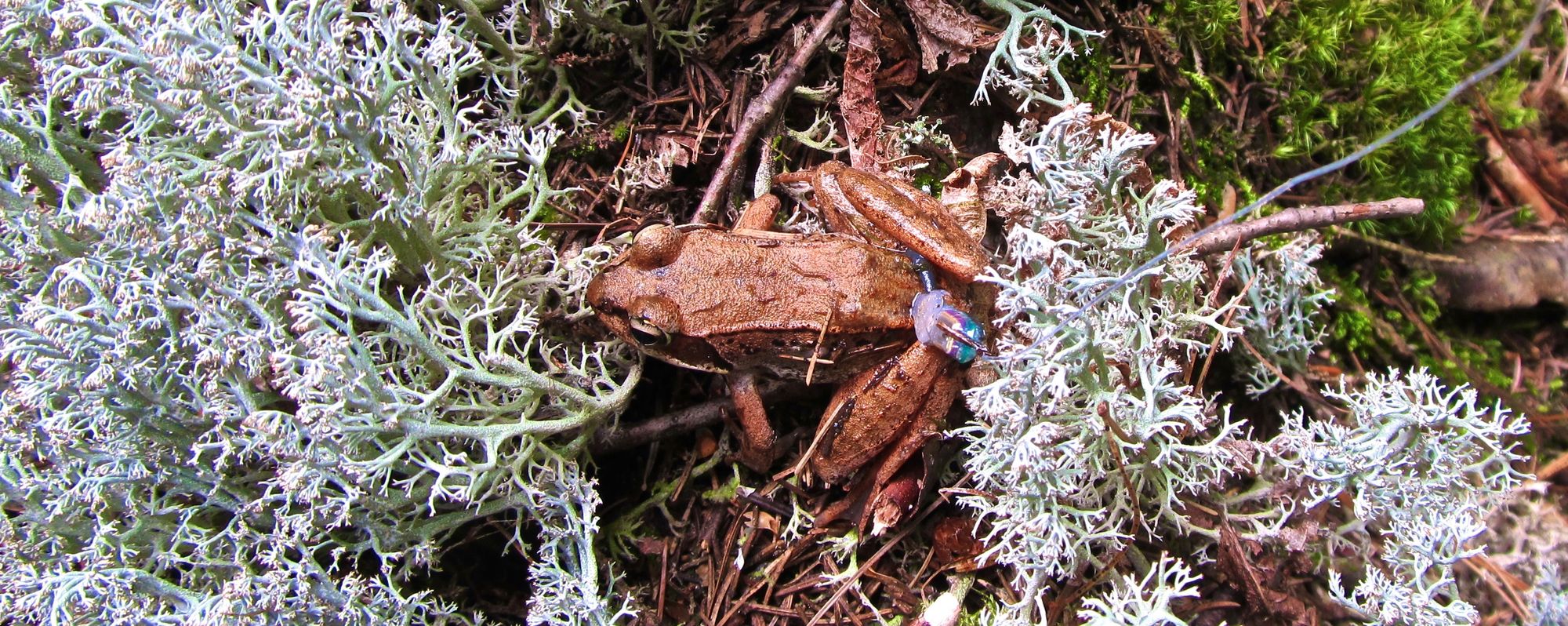Wood frog habitat selection

Wood frogs (Lithobates sylvaticus) are the most northern reaching amphibians in the western hemisphere. They evolved the ability to freeze their bodies, leaving only their vital organs functioning as they enter a state of torpor during the winter. Luke Groff, then PhD candidate at the University of Maine (now state herpetologist of Vermont), completed a PhD dissertation that explored the habitat selection of wood frogs during their active season and selection of hibernacula. I spent four summers as his field assistant catching, harnessing, and tracking wood frogs.
The field sites were located in the Jo Mary forest near Brownville, Maine. We camped at Rabbit Pond, and worked off a trail system that crossed over Turtle Ridge and by Loon, Sing-Sing, and Hedgehog Ponds. We developed a novel method for developing waistbands to attach radio-telemetry transmitters onto anurans (Groff et al. 2015) and deployed them onto 71 adult wood frogs. We tracked the frogs from their breeding ponds to their hibernacula. We spent 5-days a week living and working in the back country, cooking dinner under canoes on rainy nights and coming up with creative ways to deal with the bugs (bug spray wasn't allowed while handling amphibians).
This research culminated in multiple publications by Dr. Groff that reported some interesting results furthering the understanding of amphibian habitat selection. He reported different selection patterns during the period of migration out of breeding sites and summer habitats. During migration, wood frogs did not show any patterns of selection in their habitats or movement behavoir. However, during the summer wood frogs occupied distinct home ranges between 11,000 and 12,500 square meters, traveling up to 1.2 kilometers (Groff et al 2017). At the end of the active season, wood frogs selected sites with less canopy cover, more leaf litter, and greater amounts of coarse woody debris as hibernation sites (Groff et al 2016). My experiences on this project drove me into the field of ecology and led to my accepting a MSc position at Humboldt State University.
Groff, L.A., A.L. Pitt, R.F. Baldwin, A.J.K. Calhoun, and C.S. Loftin. 2015. Evaluation of a waistband for attaching external radiotrasmitters to anurans. Wildlife Society Bulletin, 39(3):610-615.
Groff, L.A., A.J.K. Calhoun, and C.S. Loftin. 2016. Hibernal habitat selection by wood frogs (Lithobates sylvaticus) in a northern New England montane landscape. Journal of Herpetology, 50(4):559-569.
Groff, L.A., A.J.K. Calhoun, and C.S. Loftin. 2017. Amphibian terrestrial habitat selection and movement patterns vary with annual life-history period. Canadian Journal of Zoology, 95(6):433-442.
